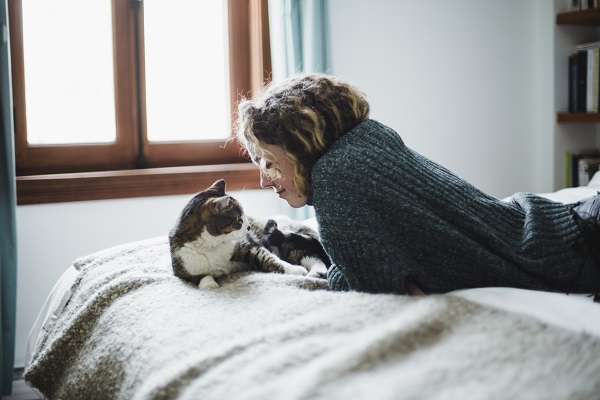-
The way we pay attention in our lives profoundly affects what we notice and how we feel. Bringing more conscious attention to the positive moments in our life is one way to enhance our happiness.
At our most basic, biological level, we’re much more sensitive to the things that pose a potential danger or threat to us than to pleasant things. Our brain is constantly scanning the environment, determining what is safe and what is harmful, and we are wired to notice and remember negative experiences more than positive ones. This design feature of the brain is called the ‘negativity bias’, a helpful concept that explains why we’re so much more affected by small, negative events than by positive ones.
Our brain’s negativity bias robs us of moments that could be used to build happiness and positivity.
Psychologist and New York Times bestselling author Rick Hanson summed up the negativity bias with a simple metaphor:
‘The brain is like Velcro for bad experiences and Teflon for positive ones.’
The good news is that we can update the inner software of the brain to help support greater happiness in life and overcome the effect of this negativity bias. During a conversation I had with Rick, he explained:
"Changing the brain for the better is a two-stage process in which activated mental ‘states’ must get installed as lasting ‘traits’. Almost all positive traits – like happiness, or gratitude, or feeling loved, or having compassion, or being determined to succeed at work, or being more skilful with other people – start with a positive state. That’s been under our nose all along, but it has radical implications.
"But, if we’re in a positive state and we don’t install it in the brain, it’s wasted. It’s a momentarily pleasant feeling, but has no lasting value. That’s why taking the extra ten to twenty seconds to stay with the experience, to try to feel it in the body and have it be as rich as possible, is key to turning positive mental states into lasting positive mental traits. The accumulation of these little moments will gradually change your brain for the better."
A powerful mindfulness technique described in Rick’s book Hardwiring Happiness is called ‘taking in the good’, which helps us balance out the brain’s negativity bias. See if you can incorporate this practice into your day today, and notice how it affects your mood. I’ve found it to be genuinely transformative.
Mindfulness practice: Taking in the good
Commit to noticing the pleasant passing moments in your day by being mindful of pleasant experiences.
- When you’re having a pleasant moment (it can be something really small, like the feeling of warm water in the shower, or the taste of a chocolate, or the smile of your child, or the feeling of sun on your body), consciously recognise it as a pleasant moment and soak it up through your senses.
- Notice that you’re experiencing pleasure and stay with that feeling for ten to twenty seconds.
- Explore what it feels like physically. Does your body feel relaxed or tense?
- Continue on with your day.
By doing this you are transforming those momentary emotional states into longer-lasting ‘traits’ that will support wellbeing and happiness.
As a mother with a small child and a business, my life can be busy, and I’ve found that it’s easy for pleasant moments to pass by unnoticed in the chaos of it all. By ‘taking in the good’ I am able to savour those moments more often.
On a recent holiday, I watched my daughter delight in splashing water in a bucket and collecting stones on the beach. The sun warmed my back, the colours were vibrant and the sound of waves crashed in the background. I consciously paused to take this moment in, to capture and absorb it fully in my body and mind, relishing it and soaking it up into every cell.
Taking time to soak up pleasant experiences using our senses makes life so much richer. It also helps us appreciate what we have, which is the foundation for gratitude and deep happiness.
This is an edited extract from Dr Elise Bialylew’s new book, The Happiness Plan (Affirm Press), $24.99. Available now at all good bookstores and online.
Mindfulness: the secret to feeling more positive

-
How is ‘phubbing’ hurting your relationships?
Here’s how to stop phubbing and be more mindful of your phone habits, to help improve face to face interactions with your family and friends.
-
Are the winter blues real?
Simple ways to boost your mood in winter.
-
Mental fitness explained
Just as you work to strengthen your body, your mental health deserves attention and exercise too.
-
Signs it's time to visit the dentist
Nobody wants to go. But there are good reasons to – promise.
-
The link between stress, anxiety and jaw pain
Physiotherapist Michael Chan explains how stress and anxiety can cause jaw pain, and how to help get some relief.
-
When you can't sleep next to your partner
You love everything about them – except their sleep habits.
Subscribe to receive the best from Live Better every week. Healthy recipes, exercise tips and activities, offers and promotions – everything to help you eat, move and feel better.
By clicking sign up I understand and agree to Medibank's privacy policy





.jpg)
